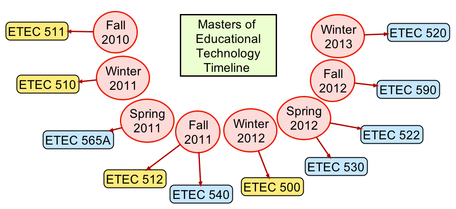The Plan
Every renovation project starts with a plan. It maps out the sequence of events. It outlines the timelines, budgets, priorities, actions, materials, skills and tasks. My MET renovation project also required a plan. My plan and application to the MET program was a two year process. Starting the program as a 'seasoned' educator required that I validate my passion for personal learning and that 'timing is everything'. Each individual course became a sub-project of the whole renovation process. As I near the end of my MET renovations, the finishing touches bring forth mixed emotions and new initiatives. I can only hope that I create a space that inspires others to take up the renovation challenge!
E. Wenger states "Learning can be viewed as a journey through landscapes of practices. Through engagement, but also imagination and alignment, our identities come to reflect the lanscape in which we live and our experience of it." (2012b, p. 5). My renovations have shaped my identity to reflect the MET landscape and my own experiences of it.
E. Wenger states "Learning can be viewed as a journey through landscapes of practices. Through engagement, but also imagination and alignment, our identities come to reflect the lanscape in which we live and our experience of it." (2012b, p. 5). My renovations have shaped my identity to reflect the MET landscape and my own experiences of it.
Step ONE: Timelines

MET timeline of courses
When I began the MET program, I planned the sequence of courses to balance work, life and course commitments. By carefully analyzing when courses were offered and comparing these to projected commitments in my personal and professional life, I created the original outline of my renovation project. Little did I suspect that my life plans, like every renovation project, held some unexpected surprises. The chronology of my renovations was adjusted several times throughout the project.
Step TWO - Budgets

Balancing the Budgets
Budgets aren't just about the money. It's about balancing time, energy, abilities, and commitments to other events in your personal and professional environments. While our bathroom was renovated, we adjusted to using the downstairs room. While the kitchen was gutted, meals became microwaveable, slower cooker or take-out meals.
For the MET renovations, each course required an 'altering of life for a while' since course readings, assignments, and virtual meetings changed my personal and professional schedules. After reviewing the course outline in the first week of the course, a budget for time, materials and skill development was mapped out - just like planning a renovation project. Life altering renovations means doing what you can wherever and whenever it is required - skype group meetings anytime and anywhere, reading while travelling, mobile access, and keeping an evolving to-do list have become some habit forming renovation strategies.
For the MET renovations, each course required an 'altering of life for a while' since course readings, assignments, and virtual meetings changed my personal and professional schedules. After reviewing the course outline in the first week of the course, a budget for time, materials and skill development was mapped out - just like planning a renovation project. Life altering renovations means doing what you can wherever and whenever it is required - skype group meetings anytime and anywhere, reading while travelling, mobile access, and keeping an evolving to-do list have become some habit forming renovation strategies.
Step THREE - Priorities

Antique door knobs
Any renovation project is a balancing of priorities. It's figuring out what needs to be done and when it needs to be done. It's changing your perspective from the expensive, antique knobs to other ones that will fit better anyway. Drywall can't happen until the framing is done. Frameworks need to be done before wiring can be installed. Painting needs to be done once the drywall is taped, filled and sanded. Priorities and personal biases, preferences and choices are revealed through renovations.
Just as real-life renovators continually adjust their priorities, so did the MET work require continual adjusting of my personal and professional priorities. Each course shaped and sanded, shimmed and polished my educational and technological perspectives, skills and considerations. They have focused my personal passions and interests into two unique areas: concept mapping as a learning and teaching tool and using e-portfolios as a reflective tool for teaching and learning.
Just as real-life renovators continually adjust their priorities, so did the MET work require continual adjusting of my personal and professional priorities. Each course shaped and sanded, shimmed and polished my educational and technological perspectives, skills and considerations. They have focused my personal passions and interests into two unique areas: concept mapping as a learning and teaching tool and using e-portfolios as a reflective tool for teaching and learning.


